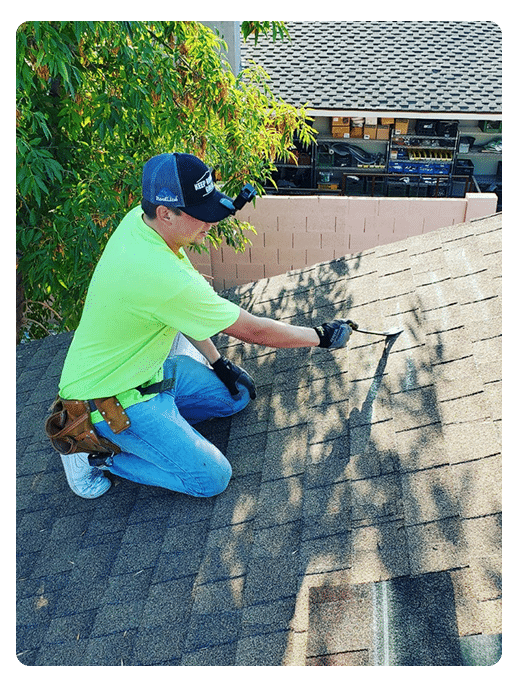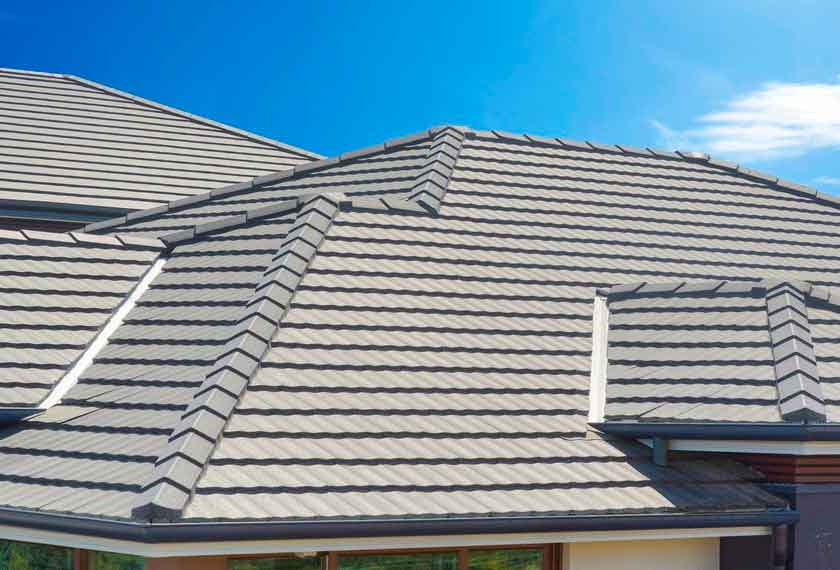Asphalt shingles are a popular and durable choice for roofing, but they can be expensive to replace. When replacing an old asphalt shingle roof, there are some common mistakes that homeowners should avoid.
This article will discuss the most common errors made when replacing an asphalt shingle roof, as well as strategies for avoiding them.
The process of replacing an asphalt shingle roof is complex and requires careful consideration in order to maximize its longevity and performance. It is therefore important to understand what pitfalls to watch out for so that any issues can be addressed before it’s too late.
With the right knowledge at hand, homeowners can make sure their new asphalt shingle roofs last longer than expected.
Overlooking Roof Ventilation
When replacing an old asphalt shingle roof, overlooking the importance of proper ventilation is a common mistake.
Roof ventilation helps to reduce heat and moisture buildup in attics and other areas of the home, improving air quality within the living space. Without adequate ventilation, temperatures can become too hot during summer months, ultimately leading to premature aging of the shingles or even causing them to fail completely.
Moreover, inadequate airflow can cause mold and mildew growth due to trapped humidity that may lead to costly repairs down the line.
Attic insulation should also be taken into consideration when installing a new roof. Insulation prevents warm air from entering your attic in winter which reduces ice dam formation on roofs as well as energy costs associated with running heating systems throughout cold seasons.
Furthermore, it ensures optimal performance of roof vents by blocking out heated air while allowing cooler outside air to enter through intake vents located near eave lines or peaks of the roof’s exterior surface.

Proper installation of insulation and ventilation before placing new shingles will help ensure maximum life expectancy for your new roof system and provide peace-of-mind that your investment has been properly protected against extreme weather conditions.
Choosing The Wrong Shingles
When replacing an old asphalt shingle roof, it is important to avoid overlooking roof ventilation. Without proper ventilation, condensation and moisture can build up in the attic space which can lead to mold and structural damage. Therefore, when installing a new roof, make sure that there are air intakes at both the soffit and ridge of the home. This will ensure that warm air escapes out through the top while cooler air is drawn in from below.
Choosing the wrong shingles for your application can be a costly mistake. It’s important to select shingles according to their expected performance level given your climate conditions as well as any local building codes you may have to adhere to.
For instance, if you live in an area with high winds or hail storms then you should look for impact-resistant shingles that are certified by UL (Underwriter Laboratories). If you want extra protection against algae growth, opt for architectural dimensional shingles with copper granules embedded into them.
Be sure to do sufficient research on different types of asphalt shingles available before making a decision so that you get the best value for your money invested.
Not Installing Ice And Water Shield
Installing ice and water shield is a crucial part of replacing an old asphalt shingle roof. This material helps protect the underlying structures, like rafters and trusses, from water intrusion which can lead to costly repairs down the road. Therefore, it is important that this material be included in any new installation.
Ice and water shield should always be installed on all valleys, around chimneys and other protrusions, as well as along eaves or at least three feet up the side walls of a home. The purpose of this product is to provide a secondary protection against water back-up due to ice dams during winter months or heavy rainfall throughout spring and summer seasons.
Without having this layer of protection, homeowners are putting their homes at risk for extensive damage from moisture saturation over time. It is essential that these areas be covered with ice and water shield when installing a new roofing system for maximum protection against future damages caused by inclement weather conditions.
Skimping On Underlayment
Underlayment is an essential component of a new roof, and it’s important not to skimp on its installation. It serves as the first line of defense against moisture penetration and should be installed in overlapping layers.
The key element when selecting underlayment is to choose one that meets local building codes. If the area you live in experiences extreme temperatures or high levels of precipitation, then it may be worth considering installing an additional layer of protection such as ice and water shield.
Installing multiple layers also helps improve your roof’s longevity while adding further security from wind gusts and other weather elements. Additionally, using roofing felt paper provides a barrier between your old shingles and newly-installed ones, which can help prevent the appearance of wrinkles or bubbles in the finished product.
Furthermore, applying more than one layer allows for improved air circulation within the attic, thus making your home more energy efficient all year round.
Ignoring Flashing
Replacing an old asphalt shingle roof is a major home improvement project and one that should not be taken lightly.
Ignoring flashing, which helps to protect the integrity of the roof from water infiltration and can come in several forms such as step flashings or counterflashings, is one common mistake homeowners make when replacing their roofs.
Without proper installation of all necessary flashing components, any new roof will be more susceptible to minor damage caused by rainwater seeping into the house’s interior over time.
It is important to remember that installing roofing materials correctly requires some knowledge of construction techniques.
It may be beneficial for inexperienced DIYers to hire a professional contractor who has experience dealing with these types of projects since they have the expertise needed to ensure everything is installed properly so that it lasts for many years.
A reliable contractor will also know how to install other essential items like ridge vent systems and gutter guards, if applicable, helping further protect your investment against water penetration.
Improper Nailing
Having discussed the importance of proper flashing, it is equally important to ensure that nailing is done correctly. Poorly installed nails can cause shingles to curl and lift resulting in numerous issues such as leaks and accelerated aging of the roof.
It is essential that all nail heads are properly embedded into the asphalt shingle and not left exposed above the surface. When replacing an old asphalt shingle roof, use a pneumatic nailer or hammer with galvanized nails specifically designed for this type of application. This will help eliminate improper nailing which could compromise both the integrity and life expectancy of your new roof.
It is also recommended to avoid using any fasteners other than nails when installing asphalt shingle roofs, as staples do not provide enough resistance against wind uplift forces and screws may damage the underlying substrate.
Furthermore, extra care should be taken when working around vents, skylights, chimneys, valleys or similar features as these areas often require special attention due to their increased susceptibility to leaking. Taking these precautionary steps during installation can greatly reduce common problems associated with improperly nailed asphalt shingle roofs while extending its overall lifespan.

Hiring An Unqualified Roofer
The consequences of hiring an unqualified roofer are severe and long-lasting. Not only can the job be done incorrectly, leading to costly repairs down the line, but there may also be safety issues that could have been avoided if a qualified professional had been hired.
Such individuals may not possess the necessary knowledge or tools to do the job properly, which can leave your home vulnerable to future damage due to weathering or other forms of wear and tear. Moreover, they may lack access to quality materials needed for a successful installation—materials that will last longer than those provided by lower-end contractors.
In short, it is essential that one carefully vets any potential contractor before committing to their services in order to ensure the best outcome possible for replacing an old asphalt shingle roof.
Ultimately, taking shortcuts when replacing an old asphalt shingle roof can result in disastrous outcomes and should therefore be avoided at all costs. An experienced contractor who is fully trained in proper installation techniques is key for ensuring a safe environment and high-quality workmanship that can withstand even extreme conditions. Investing time and resources into finding such a person will pay off handsomely over time as you reap the benefits of having a reliable roof overhead.
Conclusion
Replacing an old asphalt shingle roof can be a complex and expensive process. It is important to take the time to understand common mistakes in order to avoid them during this process.
Knowing what not to do is crucial. Overlooking roof ventilation, choosing the wrong shingles, not installing ice and water shield, skimping on underlayment, ignoring flashing, improper nailing and hiring an unqualified roofer are all key components of ensuring the job is done properly.
Taking the time for research and proper planning before starting a project like replacing an old asphalt shingle roof will help ensure that it is completed correctly from start to finish.


